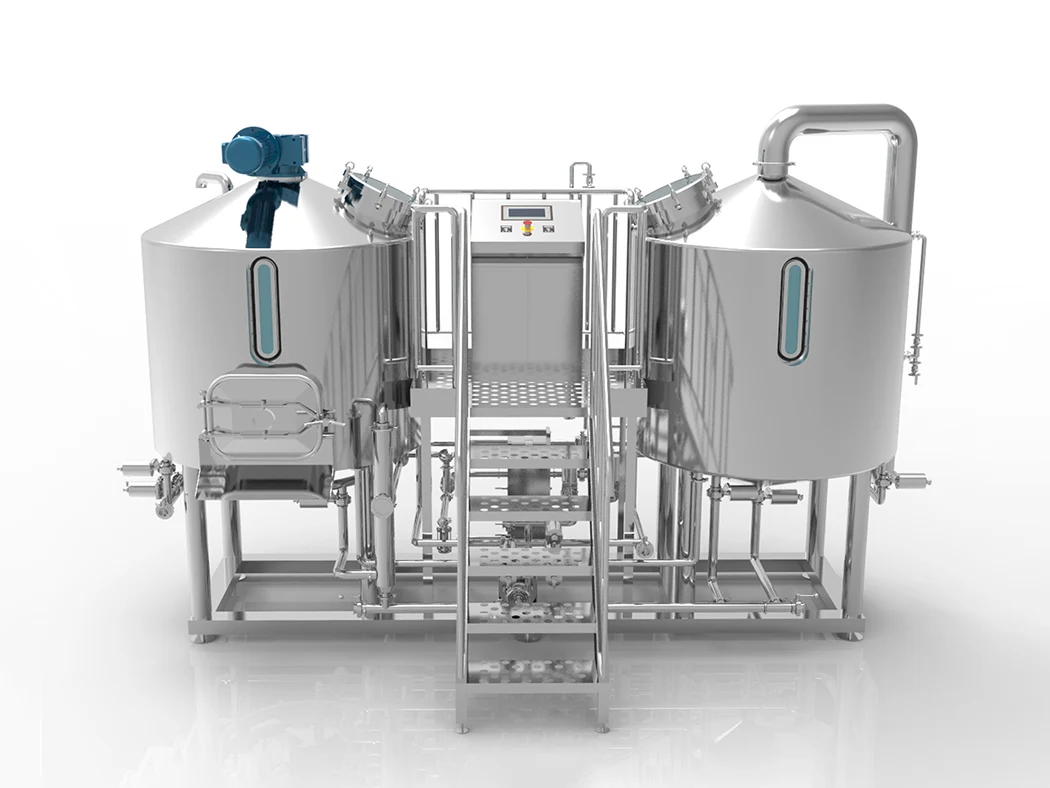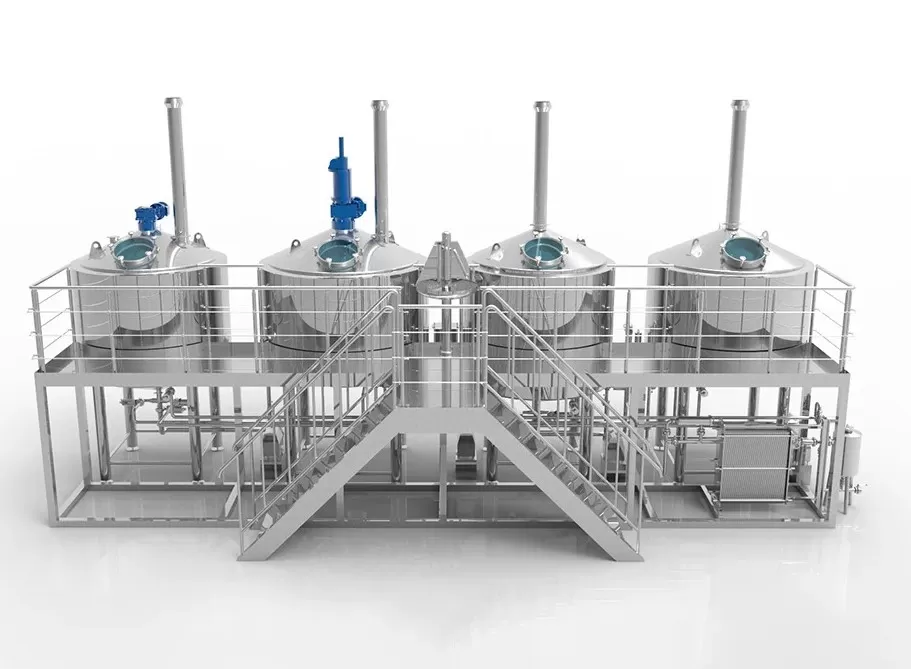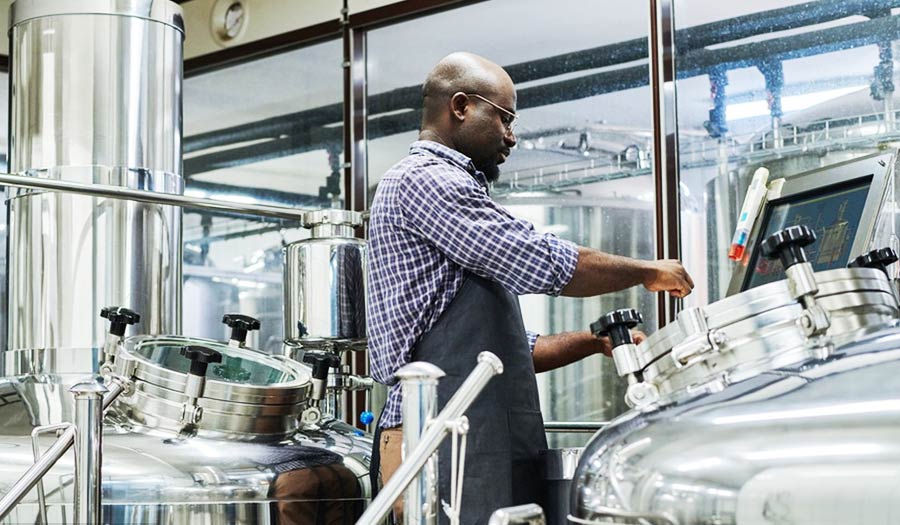In recent years, the global craft beer industry has experienced continuous growth, especially in Europe, North America, and emerging Asian markets, where consumers increasingly demand personalized, diverse-flavored, and handcrafted beers. According to multiple industry research reports, the global craft beer market is expected to exceed $200 billion by the end of 2025.
Against this trend, more and more entrepreneurs are considering establishing their own microbreweries. To ensure consistent beer quality, authentic taste, and controllable production capacity, selecting a set of high-quality zařízení minipivovaru has become a key factor for success.
The Structure and Core Systems of Microbrewery Equipment
Systém varny
The brewhouse system is the core of the entire brewing process. Its main function is to convert starches in malt into fermentable sugars, forming the foundation of the beer’s flavor.
A standard brewhouse system usually includes:
- Mash Tun – used to mix malt with water and carry out mashing.
- Lauter Tun – separates wort from the spent grains.
- Kettle – boils the wort and allows hops to be added.
- Whirlpool Tun – separates solids from the wort, preparing it for fermentation.
Technical Recommendations (10HL System):
Parametr | Specification (10HL System) |
Materiál | SUS304 / SUS316L food-grade stainless steel |
Způsob vytápění | Electric / Steam / Direct Fire |
Kontrola | PLC automatic temperature control system |
Heat Exchange | Dual-stage plate heat exchanger (cold water + glycol) |
Úroveň automatizace | Semi-automatic or fully automatic control |
A high-quality brewhouse system can improve mash efficiency, reduce energy consumption, and maintain wort flavor stability, which is especially important for startup breweries.
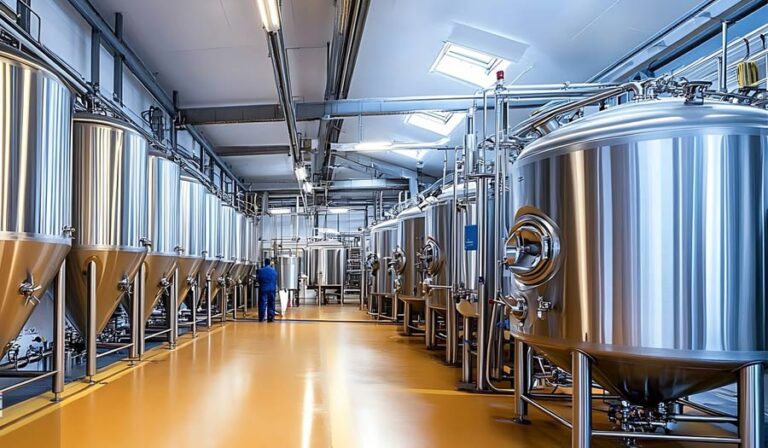
Fermentační systém
The fermentation stage determines the beer’s taste, aroma, and alcohol content. Conical fermentory are commonly used for easy yeast sedimentation and removal.
Komponenty:
- Kvasné nádoby
- Nádrž na světlé pivo
- CO₂ Pressure Control System
- Temperature-Controlled Cooling Jacket & Pressure Valve
Technical Recommendations:
Parametr | Specifikace |
Materiál nádrže | SUS304 food-grade stainless steel |
Leštění | ≤ Ra0.4μm (mirror finish inside) |
Design Pressure | 0.3–0.5 MPa |
Řízení teploty | Glycol jacket + PT100 temperature probe |
Kontrola | Automatic temperature and pressure monitoring |
2025 Trend: Smart control systems, such as PLC with touchscreen, allow real-time monitoring of temperature, pressure, and fermentation progress, significantly enhancing brewing stability.
Chladicí systém
The cooling system regulates fermentation and storage temperatures, ensuring yeast remains active under optimal conditions.
Standard Configuration:
- Glycol Water Tank
- Chiller Unit
- Circulating Pumps and Cooling Lines
Modern craft beer equipment generally uses a glycol cooling system, which offers high efficiency, safety, and low maintenance costs.
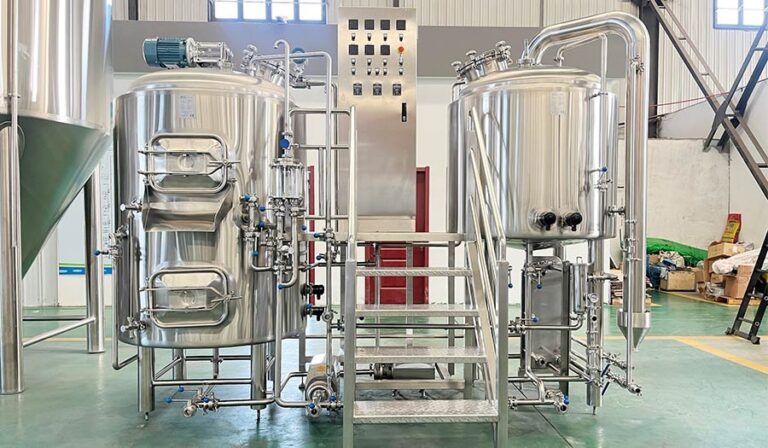
Cleaning in Place (CIP) System
The cleaning system directly affects equipment hygiene and beer quality.
Typical Components:
- Caustic Tank
- Acid Tank
- Zásobník teplé vody
- Circulation Pumps and Piping
Automated CIP systems allow programmed cleaning, greatly reducing labor costs and preventing cross-contamination.
Automation Control System
Modern craft beer equipment in 2025 is typically equipped with PLC smart control systems, which can monitor temperature, pressure, flow rate, and fermentation curves in real time.
Funkce:
- Touchscreen interface (HMI)
- Programmable logic controller (PLC)
- Automatic recording and remote monitoring
- Alarm system and safety interlocks
Auxiliary Systems
In addition to the main brewing equipment, auxiliary systems are essential to ensure continuous production and product quality.
Common Modules:
- Systém úpravy vody
- Air Compressor System
- Filling & Packaging Line
- Steam Boiler Unit
How to Choose the Most Suitable Microbrewery Equipment?
Clarify Production Capacity and Development Plan
Before purchasing equipment, you must understand your target market and expected output. Small brewpubs typically use 5HL–10HL systems; regional breweries may select 15HL–30HL; high-volume or export-oriented breweries may require systems above 30HL. Startups are advised to choose modular and expandable designs for future upgrades.
Focus on Material and Manufacturing Quality
Equipment material directly affects beer taste and hygiene. High-quality microbrewery equipment should use SUS304 or SUS316L food-grade stainless steel, with smooth welds and inner wall polishing ≤ Ra0.4μm. Choosing a manufacturer with CE, UL, or ISO certification ensures quality and facilitates export compliance.
Select Appropriate Heating Method
Brewhouse systems commonly use electric, steam, or direct-fire heating. Electric heating is simple and suitable for small breweries; steam heating is efficient and precise, ideal for medium and large breweries; direct fire has lower investment but higher energy consumption. Choose based on local energy availability and budget.
Pay Attention to Automation
Modern equipment comes with PLC automatic control systems for real-time monitoring and adjustment of temperature, pressure, and flow. Smart systems reduce human error and increase production stability, especially useful for startups with limited brewing experience.
After-Sales Service and Technical Support
Purchasing equipment is not a one-time transaction but the beginning of long-term cooperation. A reliable supplier provides installation guidance, process commissioning, operator training, and maintenance support. For overseas buyers, choose suppliers experienced in exports and remote or onsite support.
2025 Craft Beer Equipment Technology Trends
Intelligent Brewing Systems
Next-generation systems will integrate automated monitoring for temperature, flow, and mash/fermentation curves, with cloud data analysis to optimize recipes and fermentation parameters.
Energy Efficiency and Sustainability
2025 equipment emphasizes energy recovery and environmentally friendly design:
- Steam condensation recovery
- Hot water recycling modules
- Low-energy refrigeration
These technologies can save 10–30% of operational costs.
Modular and Expandable Design
Modular designs facilitate future expansion or upgrades, ideal for startups scaling from 10HL to 30HL systems without repeated investment.
New Fermentation Technologies
Variable-pressure fermenters (Unitanks) combine fermentation and storage, saving space and cost, becoming popular among small and medium breweries.
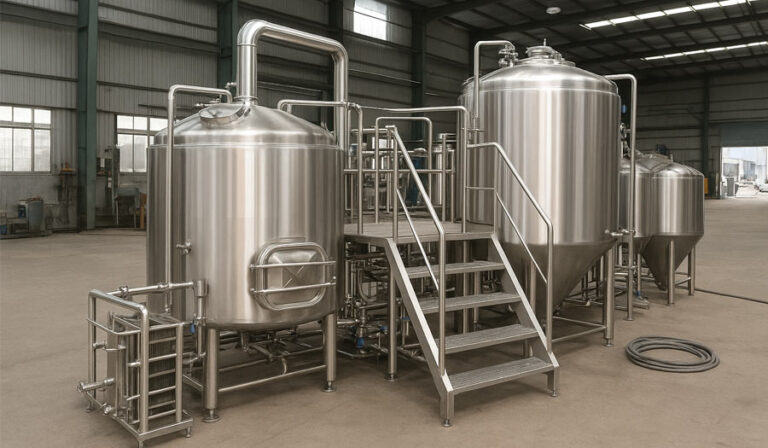
Recommended Equipment Configuration for Startup Microbreweries
System Module | Recommended Specification | Function / Notes |
Systém varny | 10HL fully automatic four-vessel setup | Daily output 1,000–2,000L |
Fermentační systém | 4–6 × 20HL fermenters | Support continuous production |
Chladicí systém | 2-ton chiller + glycol tank | Stable temperature control |
Systém CIP | Three-tank cleaning setup | Automatic sanitation |
Kontrolní systém | PLC touchscreen | Smart management, reduced human error |
Choosing a Reliable Microbrewery Equipment Supplier
- Experience & Certification: High-quality suppliers usually have years of experience in manufacturing microbrewery equipment and hold certifications such as ISO9001, CE, or UL. This ensures that the equipment meets international standards in design, material, and craftsmanship, providing long-term stable operation.
- Complete Product Line: A reliable supplier should offer a full range of equipment, from the brewhouse, fermentation, and cooling systems to CIP cleaning and automation control. This avoids compatibility issues when sourcing from multiple vendors and facilitates future capacity expansion.
- After-Sales Service: Entrepreneurs should pay close attention to the supplier’s after-sales support. Excellent suppliers provide installation guidance, process commissioning, operator training, and remote technical assistance. For overseas customers, experience in exports ensures smooth transportation, customs clearance, and installation.
- Customization & Technical Support: Every brewery has unique production requirements. A trustworthy supplier can offer customized solutions based on the client’s capacity planning and process needs, and provide professional guidance during commissioning to help entrepreneurs start production quickly.
Brew Your Own Brand with High-Quality Equipment
In 2025, the craft beer market continues to offer abundant opportunities. For aspiring brewers preparing to start their own brewery, a set of high-quality, automated, and energy-efficient microbrewery equipment is not only a production tool but also the foundation for building a successful brand.When selecting equipment, it is essential to consider production capacity, technical specifications, automation level, and after-sales support. Choosing a reliable partner will help safeguard your brewing dreams and ensure the successful launch of your brewery.

